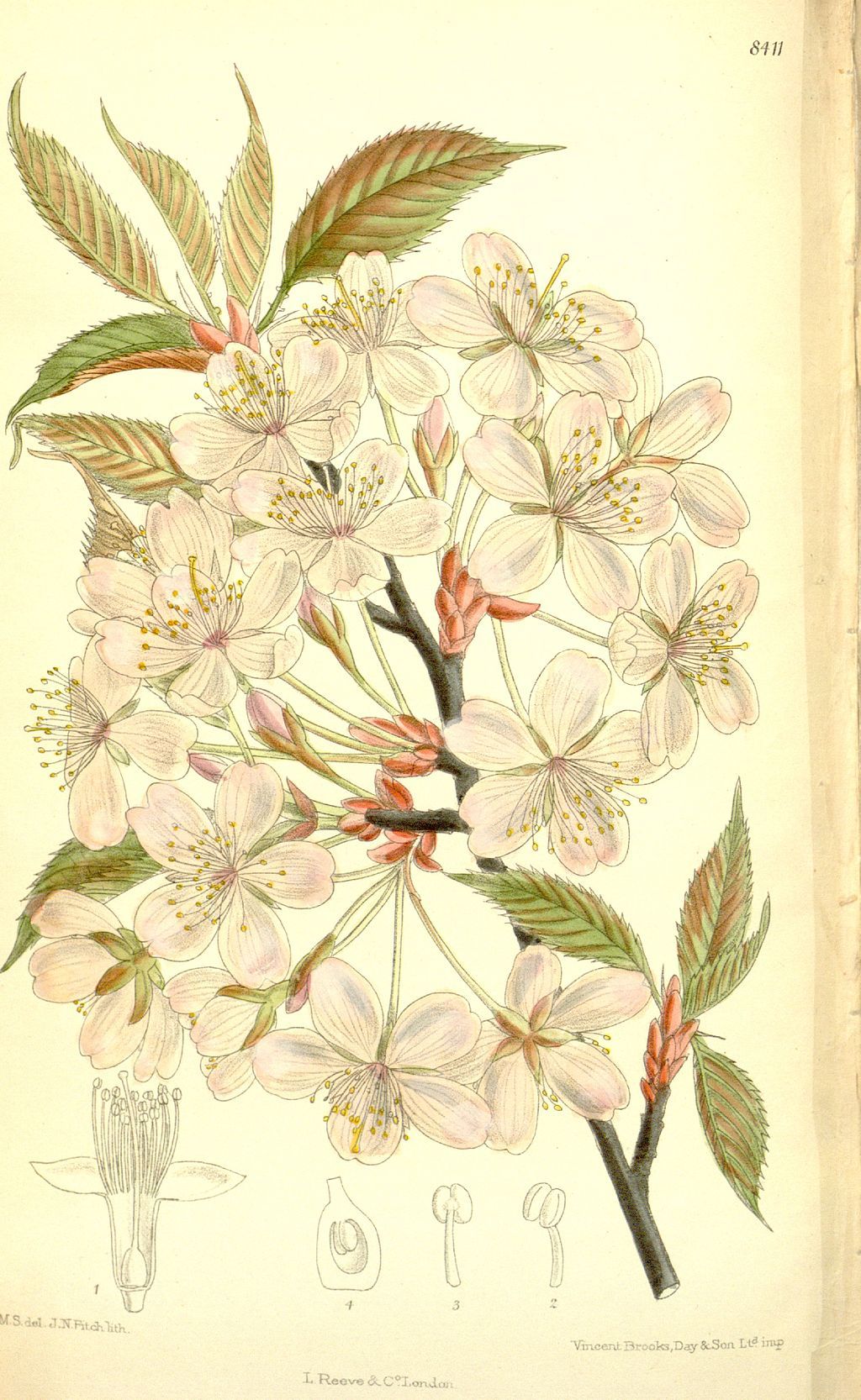Flowering Cherry : Cultural History
Cherry trees have held great symbolism for the Japanese people since ancient times. Cherry blossoms, only lasting for a few weeks, are admired for their delicate purity. The transient nature of the flowers relates well to the Buddhist ideal of life. They represent the metamorphosis over one’s lifetime, and are commonly compared to natural human life. The blossoms also symbolize Samurai culture. Their rapid flowering relates well to the ephemeral lifestyle of the Samurai, in many cases being symbolic of blood droplets. It is common to find flowering cherry trees, in most cases with blossoms, in Japanese art because of their strong significance and beauty (Cargile). It is also interesting to note that flowering cherries generally blossom during the beginning of the school year for many Japanese children, making the cherry a symbol of the first day of school much like the apple in North American culture (Konick, 2006). Yearly blooming of the cherry is so important in Japanese culture that this time of year is celebrated with a cherry blossom festival. The practice of viewing the trees originated in China during the Heiran Period, but was adopted by Japan ("Japanese Cherry Blossom Trees," 2010).This is a time of many parties and festivities that embody the idea of the transient nature of life. Even today there continue to be viewing excursions called hanami, including plentiful food, entertainment, karaoke, and Japanese sake (Cargile).
Due to their singularity, it is common in Japan for an ornamental flowering cherry to have a specific name and represent folklore. Cherries were often left were they naturally began to grow. In most cases, the tree will be replaced only after its death. Many would become known to mark a road crossing or would be planted around village temples, helping to create strong cultural bonds with surrounding townspeople (Kuitert, 1999). For example, one famous myth takes place at a shrine in Kagami, Japan where a girl falls in love with Musubi no Kami, the god of love. She then realizes that she has fallen in love with the spirit of a cherry tree and chooses to devote her life to it (Frese & Gray, 2005). The aspect of uniqueness even sparked the interest of royalty during the Feudal era of Japan. It was common for trees to be propagated by clonal cuttings, but only a seed grown tree was deemed sufficient for royalty. After the tree was sown, no further seeds from the same tree could be propagated to preserve its unique quality (Kuitert, 1999).

